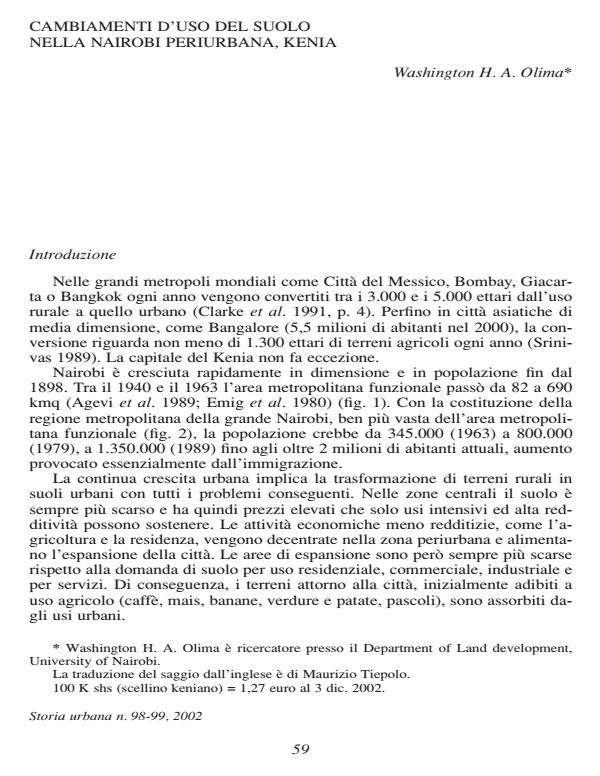Cambiamenti d'uso del suolo nella Nairobi periurbana Kenia
Titolo Rivista STORIA URBANA
Autori/Curatori Washington H.A. Olima
Anno di pubblicazione 2003 Fascicolo 2002/98-99
Lingua Italiano Numero pagine 12 P. Dimensione file 88 KB
DOI
Il DOI è il codice a barre della proprietà intellettuale: per saperne di più
clicca qui
Qui sotto puoi vedere in anteprima la prima pagina di questo articolo.
Se questo articolo ti interessa, lo puoi acquistare (e scaricare in formato pdf) seguendo le facili indicazioni per acquistare il download credit. Acquista Download Credits per scaricare questo Articolo in formato PDF

FrancoAngeli è membro della Publishers International Linking Association, Inc (PILA)associazione indipendente e non profit per facilitare (attraverso i servizi tecnologici implementati da CrossRef.org) l’accesso degli studiosi ai contenuti digitali nelle pubblicazioni professionali e scientifiche
The rate of urban growth is the single most important phenomenon transforming the pattern of human settlements. The unprecedented transformation is most pronounced in the land use changes in the peri-urban interface of the urban centers in Kenya. The peri-urban fringe is the transition zone between well-organized and recognized urban land uses, and areas devoted to agriculture. The problems witnessed in the peri-urban fringe stem from rapid urbanization and sagging urban economic productivity. Taking the capital city of Kenya, Nairobi, as a case study, this paper examines the land use changes in peri-urban Nairobi, with particular emphasis on the historical roots of land conversion changes. In addition, the paper examines the main changes within the peri-urban fringe over time in terms of physical issues, land use, tenure, housing development, and employment status. This is all the more important in view of the fact that arable land is limited and urban development of prime farmland threatens self-sufficiency in food production. The question of these locations, which are peripheral to large cities and land quality, are both considered. The paper ends by discussing the consequences of the transformation, and proposes the way ahead in the effective management of land markets in order to achieve social, economic, and environmental objectives of urbanization.
Washington H.A. Olima, Cambiamenti d'uso del suolo nella Nairobi periurbana Kenia in "STORIA URBANA " 98-99/2002, pp , DOI: